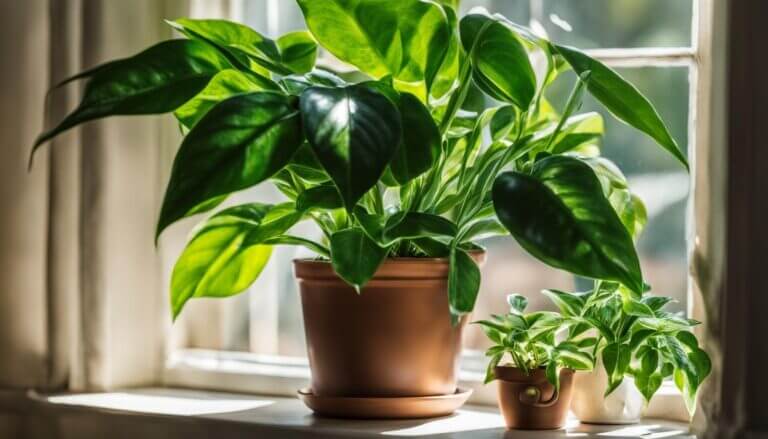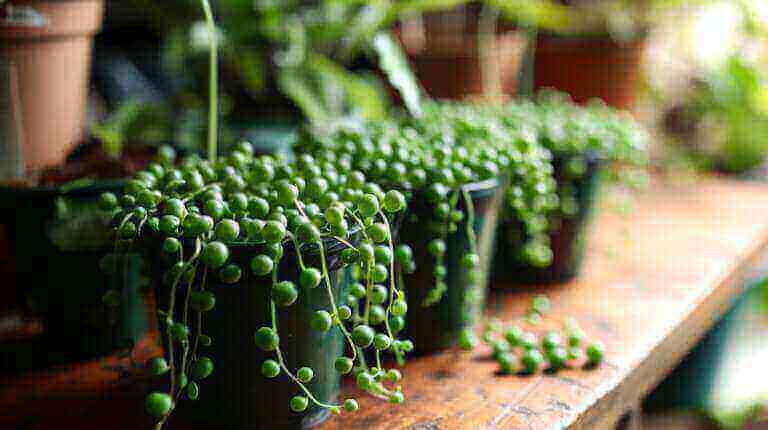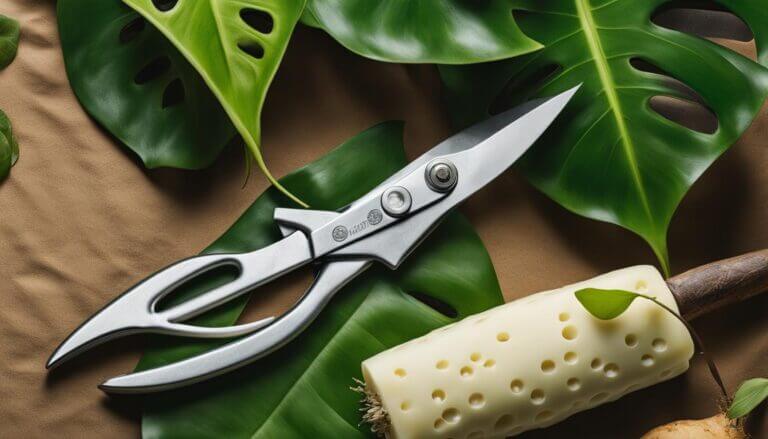Propagating parlor palm plants can be done through two methods: using seeds or divisions. While many other houseplants are difficult to grow from seeds, parlor palms are relatively easy to propagate using this method. In fact, commercial cultivation of parlor palms often relies on seed propagation. On the other hand, if you already have an existing parlor palm, you can also propagate it by dividing a portion of the plant. Both methods offer different ways to grow and care for parlor palm plants.
Key Takeaways:
- Propagating parlor palm plants can be done through seeds or divisions.
- Parlor palms are relatively easy to propagate from seeds.
- Dividing an existing parlor palm plant is another method of propagation.
- Proper care, including temperature, moisture, and sunlight, is important for successful propagation.
- Regular fertilization and repotting may be necessary to support the plant’s growth.
Obtaining Parlor Palm Seeds
When propagating parlor palm plants from seeds, you have a couple of options for obtaining the seeds. The first option is to purchase parlor palm seeds from a reputable grower. However, finding parlor palm seeds for sale can be challenging, especially for home gardeners. It is best to look for vendors located in areas where parlor palms can thrive outdoors year-round.
Another option is to collect the seeds yourself if you have a blooming parlor palm. Once the fruits are completely ripe or start to naturally fall from the plant, you can collect the black seeds for propagation.
Table: Pros and Cons of Obtaining Parlor Palm Seeds
| Pros | Cons |
|---|---|
| Convenient and readily available | Can be challenging to find for home gardeners |
| Assurance of quality and viability | Limited variety options |
| Can choose specific palm species | May be more expensive compared to collecting seeds |
As shown in the table, purchasing parlor palm seeds offers convenience and reassurance of quality, but it may be challenging to find them, and the variety options may be limited. On the other hand, collecting the seeds yourself allows you to choose specific palm species and may be more cost-effective. However, it requires a blooming parlor palm and involves a more time-consuming process.
Propagating Parlor Palm from Seeds
Propagating parlor palm plants from seeds is a rewarding and relatively straightforward process. After obtaining the seeds, it is important to prepare them for germination. Soaking the seeds in warm water for one to seven days helps to soften the seed coat and improve germination rates. This step is crucial for successful propagation, as it helps to break the dormancy of the seeds and kickstart the growth process.
Once the seeds have been soaked, it’s time to pot up your palm saplings. Choose small nursery pots filled with a well-draining potting mix, ensuring good moisture retention. Plant the seeds at a shallow depth, just below the surface, and cover them lightly with soil. Maintain consistent moisture levels in the soil by watering gently and regularly, but avoid over-watering, as excessive moisture can cause root rot.
During the germination phase, it is essential to provide the ideal conditions for the seeds to sprout. Keep the pots in a warm and humid environment, ideally between 70 and 80 degrees Fahrenheit (21-27 degrees Celsius). You can create a mini greenhouse by covering the pots with a clear plastic bag or using a propagation tray with a dome lid. This helps to maintain the required humidity and temperature levels for successful germination.
Once at least a quarter of the seeds germinate, it’s time to transplant the seedlings into larger pots. Choose pots with sufficient drainage holes and fill them with a well-draining potting mix. Gently remove the seedlings from the nursery pots, taking care not to damage their delicate roots. Plant each seedling in its own pot, ensuring that the soil level matches the level of the previous pots. This will help the young plants establish strong root systems and promote healthy growth.
Care Tips for Parlor Palm Propagation
“Proper care is essential for successful parlor palm propagation.”
During the propagation process, it is important to provide the right care to ensure the healthy growth of your parlor palm plants. Here are a few tips to help you along the way:
- Watering: Keep the soil consistently moist but not soggy. Avoid over-watering to prevent root rot.
- Humidity: Parlor palms thrive in humid conditions. Consider using a humidifier or placing a tray of water near the plants to increase humidity levels.
- Sunlight: Provide indirect sunlight to the young plants. Avoid exposing them to direct sunlight, as it can scorch their delicate leaves.
- Fertilizer: Feed the plants with a balanced liquid fertilizer once every two to three months during the growing season to promote healthy growth.
- Potting and Repotting: As the plants grow, they may require larger pots. Repot them annually in well-draining soil to provide ample space for their roots to expand.
| Propagation Method | Advantages | Disadvantages |
|---|---|---|
| Propagation from Seeds | Relatively easy and inexpensive | Requires patience, as germination can take several weeks |
| Propagation through Division | Allows for quick multiplication of mature plants | May require more experience and care to ensure successful division |
By following these care tips and choosing the right propagation method, you can enjoy the beauty and lushness of parlor palm plants in your home or garden. Whether you decide to propagate from seeds or divisions, each method offers its own unique journey of growth and satisfaction.
Dividing an Existing Parlor Palm Plant
If you already have a mature parlor palm plant that you’d like to propagate, dividing the plant is a great option. This method involves separating a portion of the plant with well-developed stems and roots from the main plant. Dividing an existing parlor palm allows you to create multiple new plants, expanding your collection or gifting them to friends and family.
To successfully divide a parlor palm, start by choosing a plant pot that is large enough to accommodate the divided portion. Gently loosen the soil around the plant and carefully separate the stems and roots. Be cautious not to damage the roots or stems during the process.
Once you have separated a section of the plant, plant it in a new pot filled with a mixture of peat moss and perlite. This will provide the plant with the necessary nutrients and drainage for healthy growth. After planting, water the new division thoroughly and place it in a location with indirect sunlight.
Proper care is essential for the success of the divided parlor palm. Ensure the soil remains consistently moist but not waterlogged. Monitor the new plant for any signs of stress or wilting, and adjust the watering schedule if necessary. With time, the divided portion will establish itself and grow into a new, thriving parlor palm plant.
Care Tips for Parlor Palm Propagation
Proper care is essential for the successful propagation of parlor palm plants. Whether you are growing them from seeds or through division, following these care tips will help you nurture healthy and thriving plants.
Potting and Repotting
When potting parlor palm saplings or dividing an existing plant, choose a pot that provides enough space for the roots to grow. Use a well-draining potting mix that retains moisture without becoming waterlogged. Repotting is necessary when the roots outgrow the current container, usually every two years.
Water and Humidity
Parlor palms prefer consistently moist soil. Water your plants when the top inch of soil feels dry, and make sure the excess water drains out of the pot. Maintain a humidity level of around 50% to 60% to create a suitable environment for the palm.
Sunlight and Fertilizer
Place your parlor palm in bright, indirect sunlight. Avoid exposing it to direct sunlight, as this can scorch the leaves. Fertilize the plants every two to three months during the growing season with a balanced liquid fertilizer diluted to half strength.
By providing proper care, including potting and repotting, adequate water and humidity, and the right amount of sunlight and fertilizer, you can ensure the successful growth of your parlor palm plants. Following these care tips will help you create an ideal environment for your plants to thrive and beautify your indoor space.
FAQ
Can I propagate parlor palm plants from seeds?
Yes, parlor palm plants can be propagated from seeds. It is a relatively easy method, and commercial cultivation often relies on seed propagation.
Where can I obtain parlor palm seeds?
You can purchase parlor palm seeds from reputable growers. However, finding them for sale can be challenging for home gardeners. Alternatively, you can collect the seeds yourself if you have a blooming parlor palm.
How do I propagate parlor palm plants from seeds?
After obtaining the seeds, soak them in warm water for one to seven days to promote germination. Then, pot up the palm saplings in small nursery pots with well-draining potting mix. Keep the soil moist but not soggy during the germination phase.
Can I propagate parlor palm plants by dividing an existing plant?
Yes, you can propagate parlor palm plants by dividing an existing plant. Choose a plant pot large enough to accommodate the divided portion, gently loosen the soil around the plant, and carefully separate the stems and roots. Plant the divided portion in a new pot with a mixture of peat moss and perlite.
How do I care for parlor palm plants during propagation?
Proper care is essential for successful parlor palm propagation. Maintain the right temperature and moisture levels during germination, use well-draining potting mix, provide enough water, humidity, and indirect sunlight. Regular fertilization and repotting may also be necessary to support the plant’s growth.







